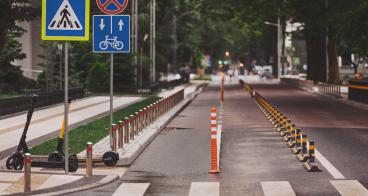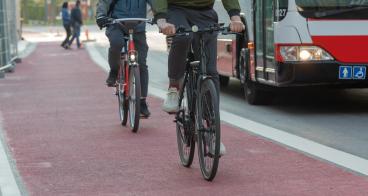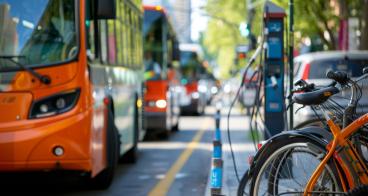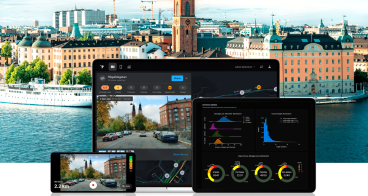Enhancing energy and resource efficiency in Europe's bus electrification
As cities worldwide strive to reduce their carbon footprint, the focus on electric vehicles has largely revolved around light-duty vehicles such as passenger cars. However, an equally important transition is underway: the electrification of public transport, specifically buses.
In the EU, CO2 emissions from heavy-duty vehicles (HDVs) such as urban buses represent around 6 % of total CO2 emissions and about 25 % of total road transport CO2 emissions. Without further action, the amount of CO2 emissions from HDVs was expected to grow by around 9 % between 2010 and 2030. In response, the EU adopted stricter targets for CO2 emissions of HDVs in October 2024: a 45% reduction for 2030-2034, 65% for 2035-2039 and 90% by 2040. By 2030, new urban buses will need to reduce their emissions by 90% and become zero-emission vehicles by 2035.
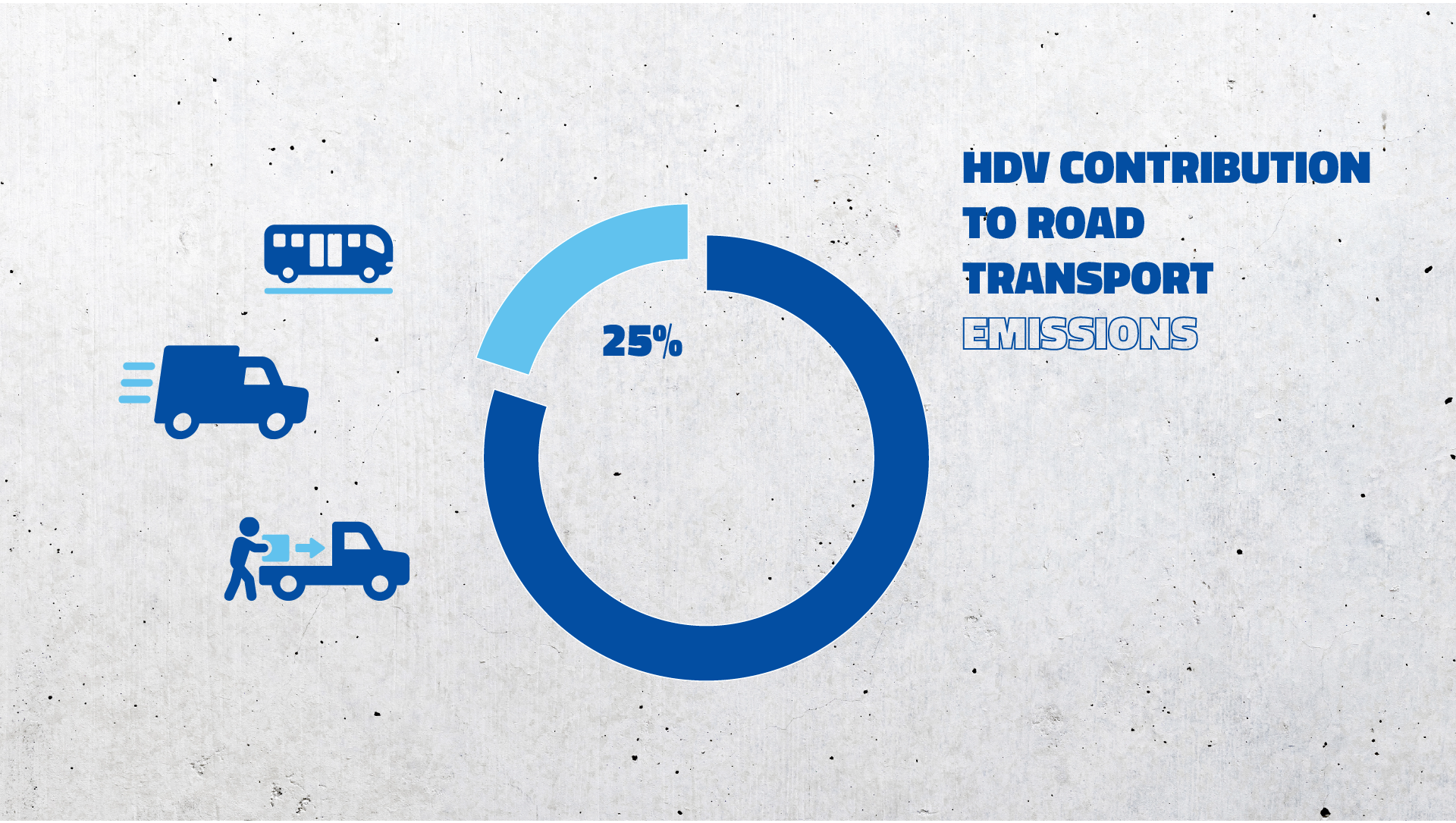
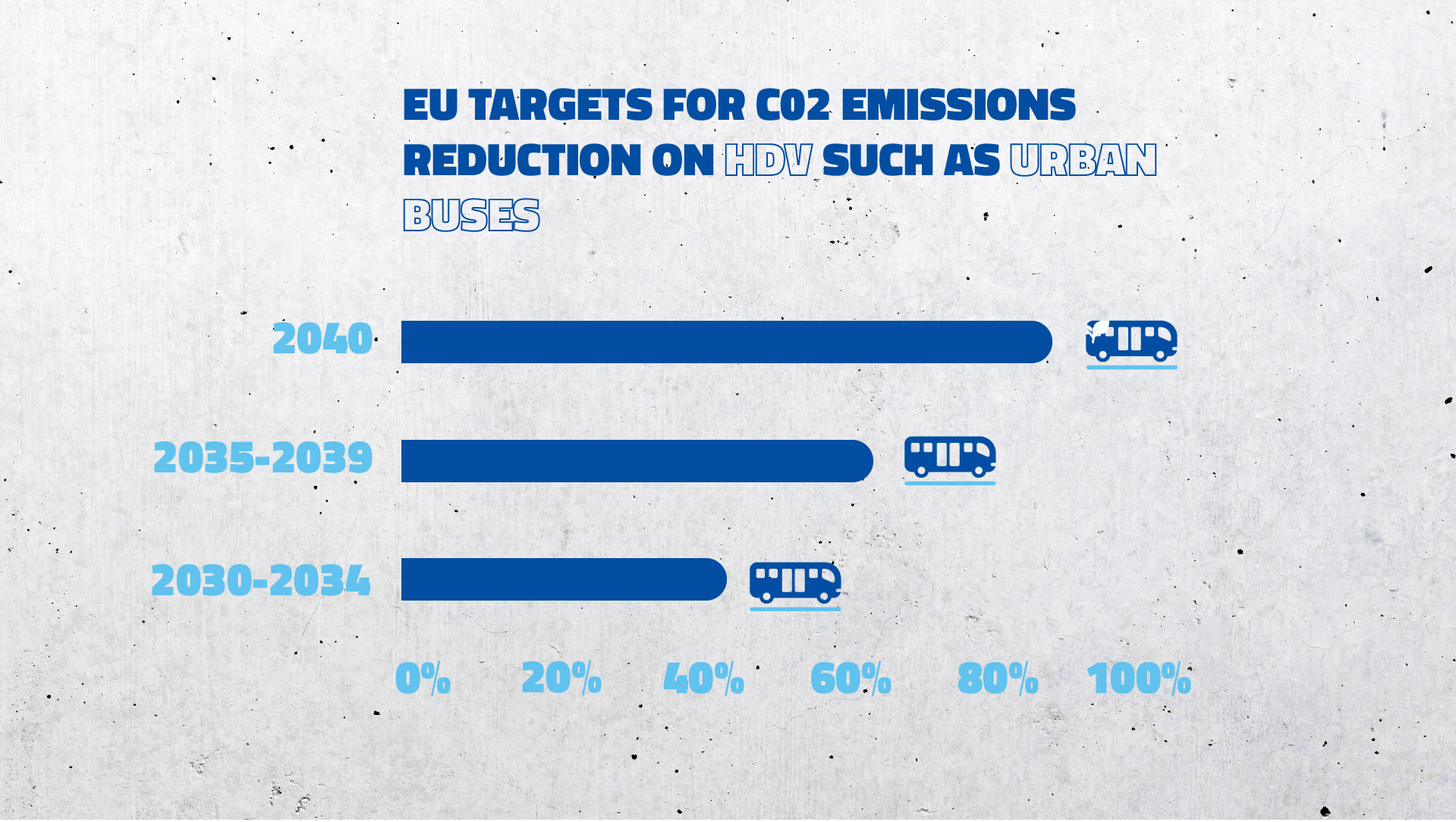
Infographic visualising the share of CO₂ emissions from heavy-duty vehicles (HDV) compared to total road transport emissions. The second infographic explains the EU targets for the coming years to reduce CO₂ emissions from HDVs. Source.
Many EU Member States, encouraged by rising market demand and user acceptance, have been keen to electrify their fleets, aligning with EU targets. While Northern European cities are more ambitious, the Mediterranean region has also set some targets to help with this transition. Lisbon, for example, plans to have an all-electric fleet by 2040 Madrid meanwhile, will have a 33% electric bus fleet by 2027 and Rome will achieve 50% by 2030. Interestingly, according to the International Council on Clean Transportation, the shift is already evident in bus sales - Q1 2023 marked the first time in Europe that battery-electric buses outsold diesel-only vehicles. Global trends are telling the same story – according to BloombergNEF’s seventh annual Electric Vehicle outlook, half of the world’s buses will be entirely battery-powered by 2032.
Beyond electrification: the need for energy and resource efficiency
While electrifying bus fleets is a major step in cutting CO2 emissions, there are a number of other measures that must accompany electrification to reduce our environmental impact. Policymakers and public transport operators must implement strategies that enhance energy and resource efficiency. Key considerations include:
- Optimising bus routes and networks - Efficiently planned routes and schedules can help minimise energy consumption, improve service reliability, and reduce congestion. Studies show that bus route optimisation can reduce bus operation costs by 13.7%, and the total bus system cost by 18%.
- Selecting the best electric bus technology - Choosing the right technology such as battery-electric or hydrogen fuel cell for buses depends on factors such as route length, operational flexibility, and the availability of local energy sources.
- Applying smart charging strategies - Implementing control strategies to reduce bus travel time variability ensures predictable schedules and reliable charging operations at terminals. Additionally, understanding grid demand and infrastructure needs allows improved efficiency and lowers costs. The City of Oslo recently tested AI-powered spatial intelligence, powered by SurplusMap, and deep market insights to understand how to optimise their EV charging infrastructure. This resulted in better management of power demands, strategic deployment of new chargers, and future-proofing their systems against rising usage.
- Selecting effective charging infrastructure - This is essential for supporting electric public transport. Cities must implement well-planned charging solutions that balance operational efficiency with sustainability. Selecting bus depot charging, on-street charging would depend on operators’ needs. Charging infrastructure can be further optimised by incorporating renewable energy sources, such as solar-powered charging stations, which enhance the sustainability of electric public transport. Research suggests that integrating solar power into bus charging systems can reduce CO2 emissions and overall daily system costs by 7.93% and 14.82%, respectively.
- Improving procurement processes – Understanding the exact needs of operators for their electric bus fleets will ensure that resources are not wasted through unnecessary product design. Tenders must also reflect these specific requirements.
Bridging the knowledge gap
To support cities in the electrification of their bus fleets, initiatives such as Interreg Euro-Med project E-MED are gathering insights on the gaps and considerations mentioned above. While cities are happy to embrace zero-emission solutions, optimised adoption and implementation need proper guidance and recommendations from experts. To this end, consultation with stakeholders will ensure that their needs are truly considered and their concerns are addressed.
E-MED invites public transport authorities and operators to answer the following survey on their current procurement practices and eco-driving processes. The data gathered will feed into guidelines and recommendations for optimised electric bus fleet operations, including charging scheduling and green and circular procurement.
Do you want to contribute with your experience? Answer the survey.



